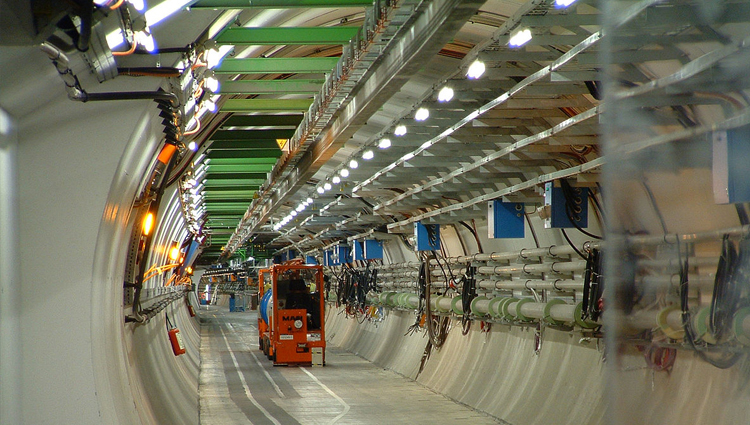Shutting Off the Large Hadron Collider
How particle beams are brought to a safe halt.
Image

Image credits: Max Braun via Wikimedia Commons
WASHINGTON (ISNS) – On hilly parts of the Interstate highway system, road engineers provide steep-grade areas with gravel off-ramps for trucks that lose their brakes. The ramps bring the big rigs to a rough but safe halt.
Engineers at particle accelerators must also be able to halt intense beams of particles during routine shut-downs or emergencies. At the largest accelerator of all, the Large Hadron Collider in Geneva, Switzerland, researchers have devised an elaborate off-ramp procedure able to bring beams of protons (particles found inside every atom) traveling at nearly the speed of light to a dead halt in a fraction of a second. The beams carry enough energy to melt a ton of copper.
At LHC, the “road” the beams travel is a sixteen-mile ring-shaped tunnel, and the off-ramp looks like an immense pencil -- it's a piece of graphite about three feet wide, 26 feet long, wrapped with steel, water cooled, and encased in concrete.
The difficulty of stopping the proton beam isn’t the large number of protons involved, a hundred trillion or more at any moment. That sounds like a lot, but all those protons -- if they were atoms at room temperature -- wouldn’t be enough to inflate a basketball.
Rather, the difficulty lies in the amount of energy in the protons. "When the machine achieves full operation," said Robert Appleby, "the energy of the protons will be about 360 mega-joules, equivalent to the energy of an aircraft carrier moving through the ocean at a speed of 20 knots." And all that energy is concentrated in a beam that’s thinner than a frail bit of thread. Appleby is one of the scientists who worry about seeing that the LHC runs smoothly.
The LHC is in the business of doing exotic physics -- using this energy to create unstable particles that, the researchers hope, will reveal information about the fundamental structure of the universe.
The protons in the beams (parceled into bunches) race around the LHC machine many thousands of times per second. When the machine is to be turned off, said Appleby, the beam can be siphoned off, bunch by bunch, and shot sequentially into the graphite dump. The bunches are aimed so that they don’t all hit the graphite at the same place. This prevents a meltdown of the dump. This is how you can absorb an aircraft-carrier-amount of energy in a fraction of a second.
Appleby's study of what happens in the case of an LHC-shut-off will be published in an upcoming article in the journal Physical Review Special Topics.
Filed under

